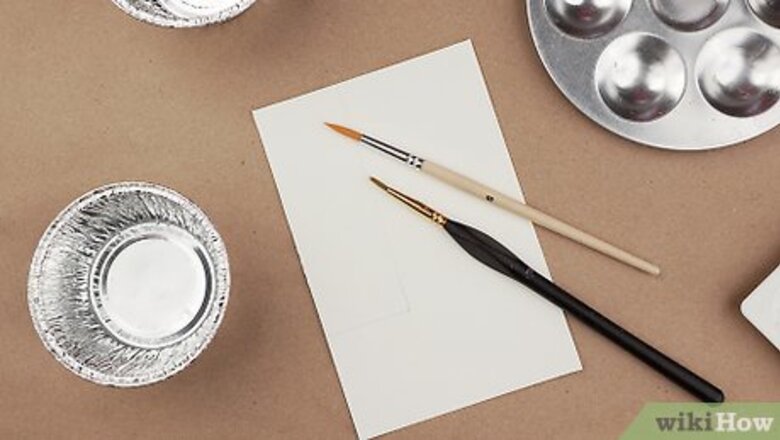
views
Getting Familiar With Your Materials
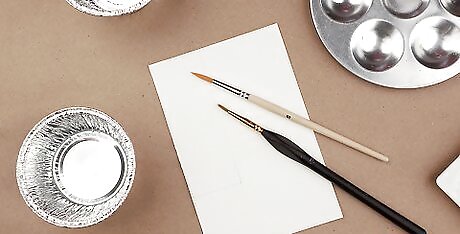
Purchase your materials and set up your workspace. To set up your workspace, spread newspaper over a table so that you won't stain the surface. Fill up a cup with water and place it at the workspace. Make sure to purchase a white pastel at an art supply store. You can paint with gouache on a variety of different surfaces. Many artists use watercolor paper because it is inexpensive and portable. You can also use illustration board or watermedia canvas, which is an especially absorbent canvas designed for gouaches and watercolors. Keep a spray bottle of water and a roll of paper towels at your workstation. Use a disposable cup or a cup that you don't drink out of for holding your water. You will be cleaning your brushes in the cup so you don't want to use one that you drink from.
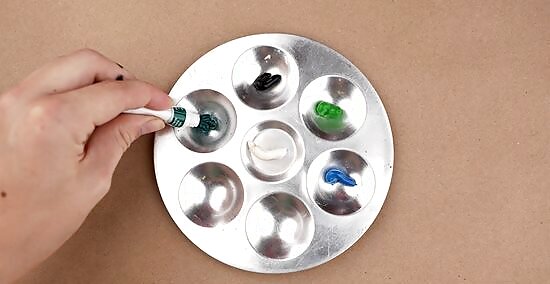
Add colors to the palette. Squeeze out a small amount of each gouache color into the indented compartments of your palette. If you know that you aren't going to use certain colors, you don't need to add them to the palette.
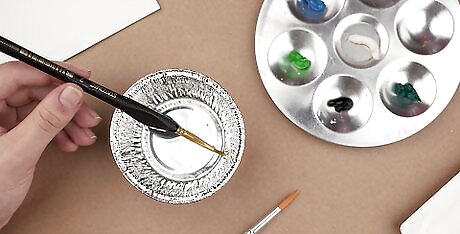
Experiment with adding water to the paint. Before you embark on your painting, it's a good idea to get used to working with gouache. Dip a brush into a color and draw a line on a piece of scrap watercolor paper. Dip your brush briefly into the water, then draw another line. Notice how the opacity of the color is affected by adding water. Keep experimenting with adding water to the paint. Make washes of colors by squeezing color into a compartment of your palette, then dipping the brush into water and swirling the brush around in the color, releasing the water and mixing it with the paint on the palette. When mixing water with gouache on your palette, always start with the gouache, then add water with your brush. Dilute the paint gradually. It's better to add too little water than all at once, because you can always add more.
Planning and Starting Your Painting

Mix your colors. Think about what you are planning to paint. Mix colors in your palette to create the colors that you will need for your design. Always clean your brush by swirling it in the water before you change colors to avoid contamination. You can mix paint by squeezing two colors into the same compartment of your palette and mixing with a brush. You can also mix colors by scooping up some paint on the brush, depositing it in a clean compartment of your palette, then cleaning your brush and dipping it into another color. Transfer the other color into the compartment and mix the colors together with the brush. You should be able to make all the colors you need just by using red, blue, yellow and white.
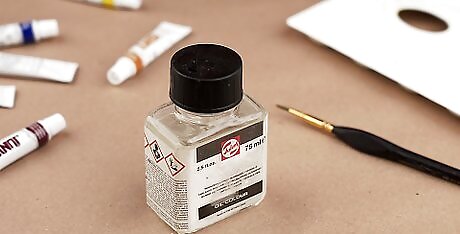
Add Gum Arabic to diluted paints. If you have considerably watered down some of your gouache colors, add a few drops of Gum Arabic to the paint and mix with a brush. Gum Arabic binds the gouache color to the paper so that the pigment doesn't wipe away after the water has evaporated.
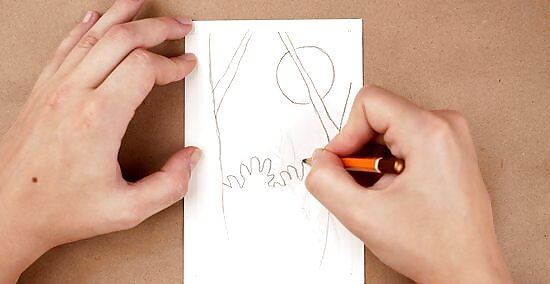
Lightly draw your design. Many artists find that it is useful to lightly sketch their design onto the surface that they are going to paint on. This can allow you to fully flesh out your idea before you use paint to set it in stone. Use a graphite pencil to lightly draw what you are going to paint.
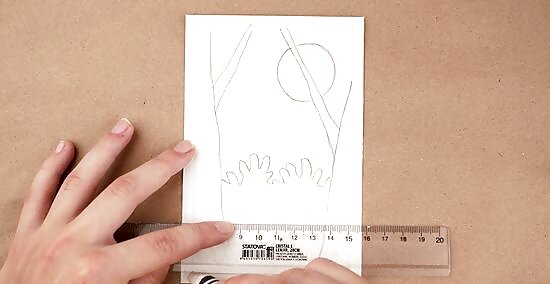
Color white areas with white oil pastel. Before you add paint to your design, first use a white pastel to color any areas on your design that you want to remain white. Because oils naturally deflect water, your water-based gouache will not adhere to any areas of paper colored with white oil pastel. Coloring with white oil pastel is not the only way to have white in your design. You can also use white gouache paint to add areas of white. However, if you are painting a very light and delicate design, you may not want to add a heavy layer of white paint to your painting. This is why some prefer to use white oil pastel instead of white gouache. If you do not plan on having white in your painting, you can skip this step.
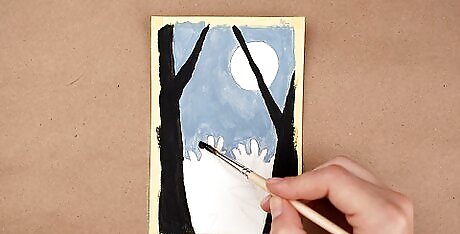
Lay down a few base colors. Gouache paint is best used in thin layers. Paint the basic colors of your design, filling in the drawing that you made earlier. Do not use the gouache color straight from the tube; instead, water it down with several drops of water in the palette so the paint glides on the page. For instance, if you are painting a tree, fill the trunk with brown and the leaves with green. Paint large areas first before adding in details. Some artists only choose to use one or two watered-down layers in their work to create a sheer, watercolor-like effect. Others prefer to use many layers to add detail and dimensions to their designs. Although gouache can be built up, be careful not to apply it too thickly, as gouache has the tendency to crack when it is laid on very thick. When gouache dries, it makes darker colors appear lighter and lighter colors to appear darker. Take that into consideration when painting.
Finishing Your Painting
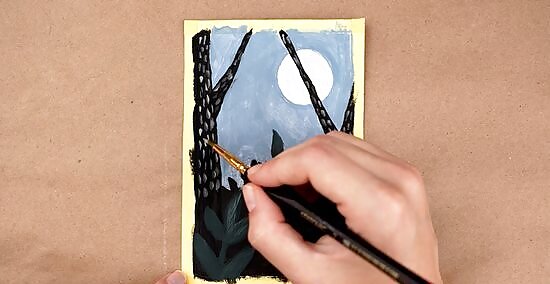
Add paint when the first layer is dry. It's important to let your layers dry completely before painting on top of them. If you start to paint on top of a wet layer, the colors will swirl and mix in a way that is very hard to control. Though some artists have mastered blending gouache painting while both colors are wet, it's a good idea when you're just beginning to paint with gouache to let the layers dry completely. If your colors do begin to bleed, stop painting and let them dry, then paint over the blended area with the desired color. If you notice that some of your paints are drying on the palette, spray them with the spray bottle of water to keep them wet.
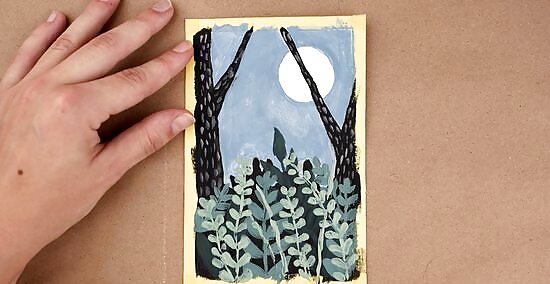
Add dimension to your design using shading. There are a number of ways to shade when you are painting with gouache. Because gouache dries extremely quickly, it's not feasible to spend your time mixing the colors on the surface of the canvas as you would do when painting with oil paints. One way that you can add shade is to paint a series of lines of color laid next to each other in a gradient that goes from light to dark. For instance, if you are painting an apple, start with a line of pure red, then a line of slightly grayer red, and then add more gray until the last line is the darkest shade of your shadow. After you lay down all the lines, soften the transition of color by dipping your brush in water, removing excess water using a paper towel, then gently scrubbing the dampened brush across the lines of color to blend the colors. You can also shade by adding translucent layers of paint in progressively darker colors. Finally, you can crosshatch or stipple to achieve shading. You can soften the stippling or crosshatching by using a slightly dampened brush to rub the area of the painting to blend it.
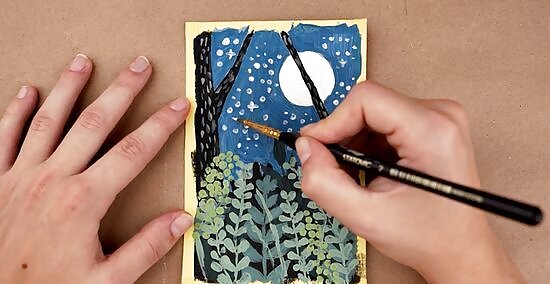
Add details using a small brush. After you have laid down your colors and have shaded your piece, go in with a small brush and add details to your piece. You also may choose to outline parts of your design either using a thin brush dipped in black gouache, or using an ink pen that can give you solid, defined lines. For instance, if you are painting a strawberry, you may go in with white paint and draw in the seeds of the berry. Then you might use a thin brush to define the leaves of the berry, and then finish by outlining the berry in black pen.

Refine your piece. After you add details to your design, go back and refine your design, correcting any mistakes and adding any finishing touches. Make sure that the paint is dry before you go in to finish your piece.
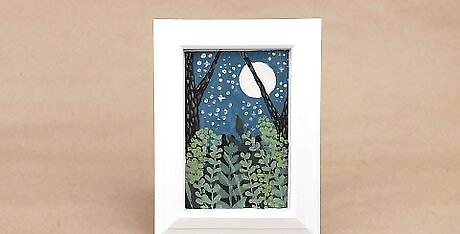
Frame your piece. If your final work is something you're really proud of, consider framing the painting behind glass to protect it from weathering and aging. When you are framing your piece, be sure to mount it first, then place it inside the frame. Mounting prevents the painting from being directly against the glass, which can cause condensation and mold-growth, especially in humid environments. Don't varnish your gouache painting. Although varnish is a great way to protect other mediums, varnish will alter and darken the colors of your gouache painting.















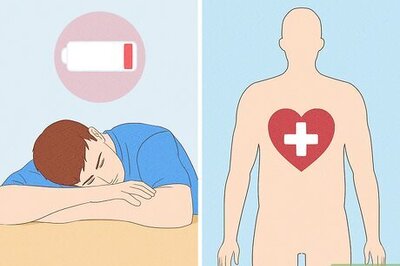
Comments
0 comment